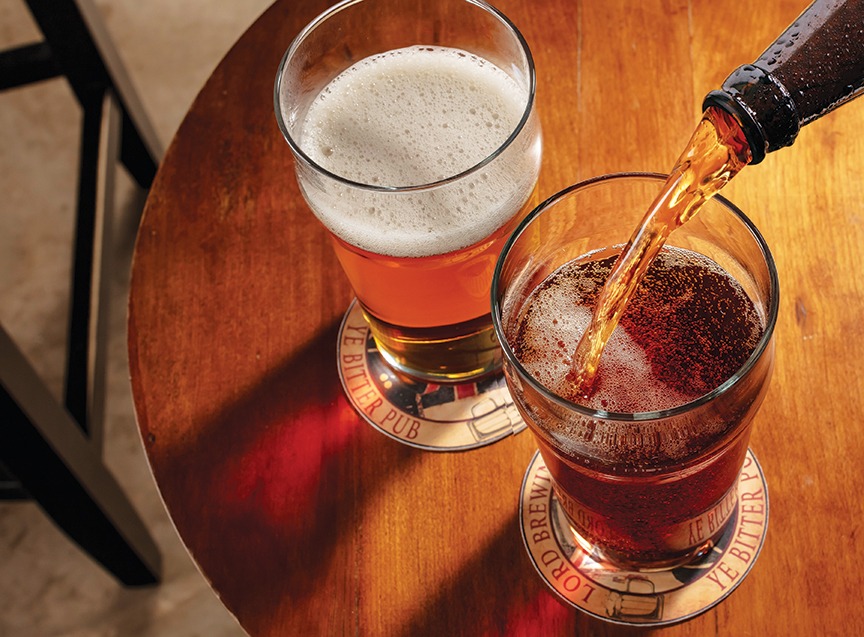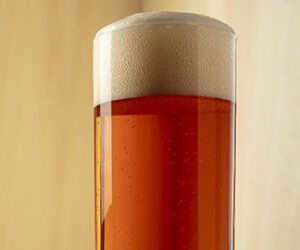Brown Ale
When I ran a homebrew competition, brown ale was the biggest hammer I had for keeping judges in line. “If you show up late this year, I’m putting you on brown ales.” “Any more rude comments on the judging forms, and it’s two rounds of brown ales for you.” Very effective, too.
Ten years ago pale ale was a more effective threat, but pretty soon even the rawest new brewer had figured out that clean yeast and plenty of hops went a long way toward making a good pale ale.
Early on, though, judges hid out in the brown ales—there weren’t many surprises, and you rarely got the feeling you’d just been poisoned by someone’s blend of lighter fluid and bubble gum.
Most homebrew judges are involved because they love beer: good beer, for the most part. A judge with much experience at all has discovered that judging brown ales at a homebrew competition is like sitting through four hours of “Love Boat” re-runs—with no commercials.
All of which is a little odd, really. Brown ales have the potential to be very satisfying beers with an engaging complexity. A few good commercial examples are widely available in the US, so homebrewers have good benchmarks. And brown ales are not a technically difficult style; no special equipment (such as a lagering tank or decoction mash system) is required to brew one.
Brown ales are an early favorite for many new brewers. They seem pretty simple, and their rich color and flavor is a real departure from the sorts of anemic lagers that the homebrewer is trying to escape. But early brew attempts are rarely accompanied with a lot of skill (naturally), and by the time the adventurous brewer has begun to develop some real expertise, new and more interesting horizons beckon.
The early attempts invariably consist of six or seven pounds of amber malt extract, some corn sugar, and a negligible quantity of hops. This near-classic ends up with no malt, no hops, a soda pop head and, with luck, an interesting bacterial contamination. Odds are it’s cloyingly sweet, as well. This is homebrew judge hell, believe me.
Commercial brown ales, of course, are nothing like that. Although it’s by no means as common as variations on pilsners and pale ales, interesting brown ales are available for comparison. There are three primary versions of the brown ale—two English and one American. (True, Scotland has its own interpretation, but it’s really in a distinct class of its own. And the Belgian versions are, well, Belgian and that’s one particular nut we’re not going to crack today.)
The brown ales of southern and western England are closely linked to an early age in brewing. The beers are dark and rich, with very low hopping rates and generally a low alcohol content. The British often use sugar in brewing, and the dark color of these brews may owe as much (or more) to caramel sugar and dark invert sugar as to dark malts. Homebrewed versions could use lots of caramel malts (perhaps a blend of several different colors, leaning heavily toward those of 120° to 180° Lovibond), dark brown sugar, turbinado sugar, or molasses.
More commonly available in the US are the drier, although still malty, brown ales of the northeast, such as the classic Newcastle Brown Ale and Samuel Smith’s Nut Brown Ale. Here the emphasis is less on the sweetness of caramel and more on the “nuttiness” of various toasted malts and the fruitiness of the yeast. Developed to some degree to compete with the pale ales brewed elsewhere in England, these beers are lighter and crisper than the older style. And the attempt has met with some success—Newcastle Brown ale is England’s best-selling bottled beer.
According to Michael Jackson, Newcastle’s brewers blend two very different beers to produce their brown ale. One portion is brewed to a very high gravity so that fermentation creates extremely estery (fruity) notes they cannot achieve at normal beer gravities. That beer is then blended with a low-gravity “amber” beer to produce their standard at an original gravity of 1.045.
Another commercial example of the style, Samuel Smith’s Nut brown ale, is a bit richer, with a toffee-like character. The use of hops is very delicate, although there is a subtle contribution, certainly from very low additions of some of the finer British varieties: Goldings or Fuggles.
The third style of brown ale actually arose among American homebrewers. Whether through ignorance, willfulness, or (more likely) sheer creativity, homebrewers added a foreign element to brown ales: hops! They cranked the bitterness way up, added lots of flavor and aroma hops, and even dry-hopped!
While judges may have been relieved at the appearance of some character in brown ales, the beers were regularly disqualified as being out of style. Eventually, however, organizers (could the Dixie Cup have been the first?) acknowledged the inevitable: a new style had been born.
American brown ales are quite different from their British counterparts. Apart from the much more generous hopping—and the general use of American hop varieties such as Cascade—the beers tend to avoid the warm, rounded maltiness typical of British caramel malts and, instead, contain the sharp edges of American crystal malt and the roasted, burnt notes from the use of darker chocolate and black malts.
People’s tastes vary. Some enjoy slipping into a freshly laundered, crisply starched dress shirt; others prefer an old soft-cotton pullover. (Me? Let’s just say that flannel jammies and a dark ale before the fire is the best way to spend winter.)
Although the American microbrewery explosion hasn’t openly embraced the style, more and more brown ales seem to be appearing, and brewpubs often offer variations on the theme. A contract-brewed version, Pete’s Wicked Ale, enjoys a large following. Michael Jackson has good words for Brooklyn’s Brown. In the great Northwest Pyramid Ales offers a creditable version of the style. Full Sail’s flowery brown ale will soon be bottled seasonally, in the autumn.
So given all that, here are some style guidelines.
Southern English brown ale: Very dark, but not black. Very sweet (which means, of course, with very low hopping rates as well). Low alcohol, with an original gravity around 1.035.
Northern English brown ale: When pressed, my artist wife, Elizabeth, offered “burnt umber” as its color. For those of us with less art training, she conceded to mahogany—reddish brown. Hopping rates are a bit higher, and the beer attenuated more (more sugars turned into alcohol and carbon dioxide), but bitterness is still subdued. A dry maltiness predominates. Original Gravity is about 1.045-1.050.
In both English versions, British malts (especially British caramel malts) are essential. Nuttiness can be enhanced by the use of “amber” malt, which can easily be created at home.
Spread 1/2 to one pound of pale malt on a cookie sheet and toast it in the oven at 275° F for 60 minutes, then 350° F for an additional 30 minutes.
The kitchen will take on the unmistakable aroma of Grape Nuts, and freshly crushed toasted malt adds a wonderful edge to the caramel malts without any unwanted roasted or burnt flavors.
Kettle sugars are entirely appropriate for both styles, with an emphasis on raw, brown sugars (such as turbinado or demerara). The truly adventurous brewer could try inverting brown sugar.
Good, fruity ale yeasts are essential. Commercial breweries can get away with bottom fermentation for these, but the homebrewer will find top fermentation better and simpler.
Cooper’s Ale Yeast is a good choice among dry yeasts. For best results, good liquid yeasts include Wyeast 1098, Yeast Lab A04, or BrewTek CL-170. For buttery flavors, try BrewTek CL-160, Wyeast 1968, or ABS001.
American brown ales offer a somewhat wider range but are usually of moderately high gravity (1.045-1.055). Color is somewhat darker than the Northern English versions and achieved with dark, roasted malts. The beers are almost certainly all-malt.
A wide array of hops are suitable, and high-alpha hops can be used for bittering. The ubiquitous Cascade hops seems to be a favorite, but flowery, aromatic hops such as Mt Hood, Liberty, Willamette, or Goldings would be good choices.
Any of the ales yeasts mentioned above would work well, as would very clean, crisp strains such as Wyeast 1056 or BrewTek CL-10.
Do it all right and maybe judging brown ales will become a plum.



